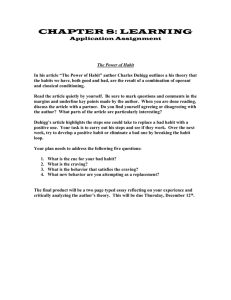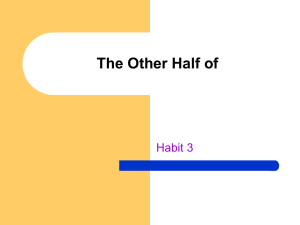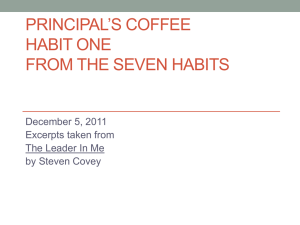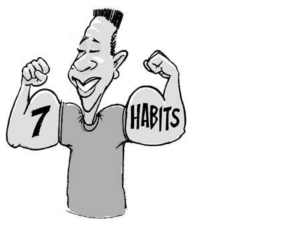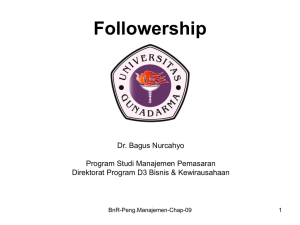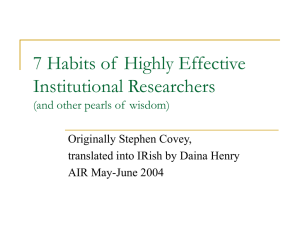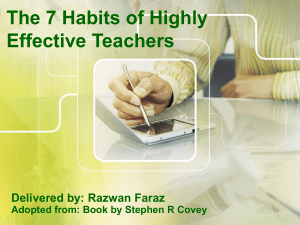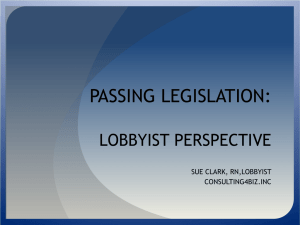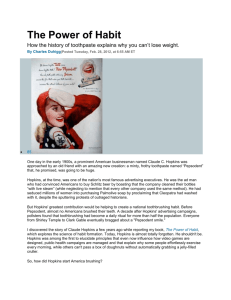Presentation Slides
advertisement
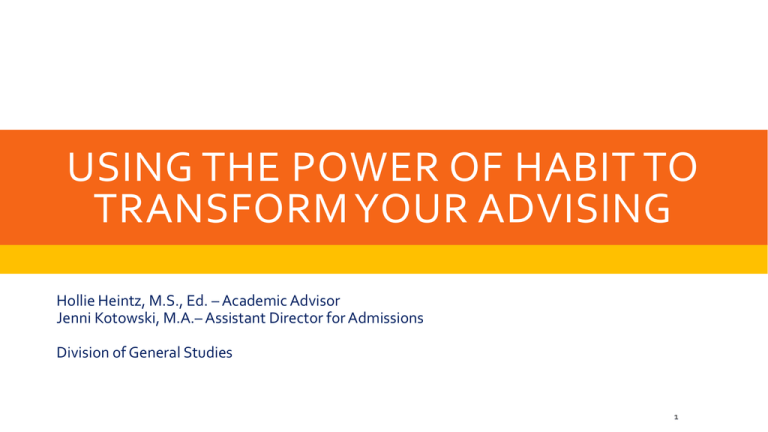
USING THE POWER OF HABIT TO TRANSFORM YOUR ADVISING Hollie Heintz, M.S., Ed. – Academic Advisor Jenni Kotowski, M.A.– Assistant Director for Admissions Division of General Studies 1 INTRODUCTIONS 2 GOALS OF THIS PROGRAM Demonstrate one very successful method to change any habit Introduce The Habit Loop Discuss benefits of using “Habit Looping” both personally and professionally Provide examples of ways you can use this in your own professional development and/or when working with students 3 THE POWER OF HABIT BY CHARLES DUHIGG 4 THE SCIENCE 5 THE HABIT LOOP Cue – a trigger that tells your brain to go into automatic mode and which habit to use Routine – can be physical or mental or emotional Reward – helps your brain figure out if this particular loop is worth remembering for the future 6 CHANGING A HABIT 7 THE POWER OF HABIT 8 THE FRAMEWORK Identify the routine Experiment with rewards Isolate the cue Have a plan 9 STEP 1 – IDENTIFY THE ROUTINE This is the behavior you want to change Examples – Eating a cookie everyday at 3pm Reading email instead of doing work Having too many adult beverages when you watch sports Biting your nails when you are stressed Swearing Insert your item here _______________ 10 STEP 2 – EXPERIMENT THE REWARDS Rewards are powerful because they satisfy cravings. To figure out which craving are driving particular habits, it’s useful to experiment with different rewards. Choosing what to do instead of (your routine here) isn’t important. The point is to test different hypotheses to determine which craving is driving your routine. By experimenting with different rewards, you can isolate what you are actually craving, which is essential in redesigning the habit. 11 STEP 3 – ISOLATE THE CUE Can be difficult to identify the cues that trigger our habits because there is too much information bombarding us as behaviors unfold. 12 STEP 3 – ISOLATE THE CUE Experiments have shown that almost all habitual cues fit into one of five categories: 1. 2. 3. 4. 5. Location Time Emotional state Other people Immediately preceding action So when trying to determine a cue – write down these five things the moment the urge hits to help you determine the trigger. 13 STEP 4 – HAVE A PLAN A habit is a choice that we deliberately make at some point, and then stop thinking about, but continue doing, often every day. A habit is a formula our brain automatically follows: When I see a CUE, I will do ROUTINE In order to get a REWARD To re-engineer that formula, we need to begin making choices again. The best way to do that is to have a plan. Plans are known within psychology as “implementation intentions.” 14 15 HOW DO WE USE THIS IDEA WHEN WORKING WITH STUDENTS? 16 LET’S PRACTICE 17 WHAT DID YOU LEARN? 18 POWER OF HABIT AT WORK – JENNI’S STORY From January 2012 – July 2013 lost 108 pounds Dropped 7 dress sizes Have run 5 half-marathons 19 RESOURCES PAGE http://personalsuccesstoday.com/the-habit-change-worksheet/ http://duhigg-site.s3.amazonaws.com/wpcontent/uploads/2012/04/How-to-Change-a-Habit.jpg http://charlesduhigg.com/ 20
